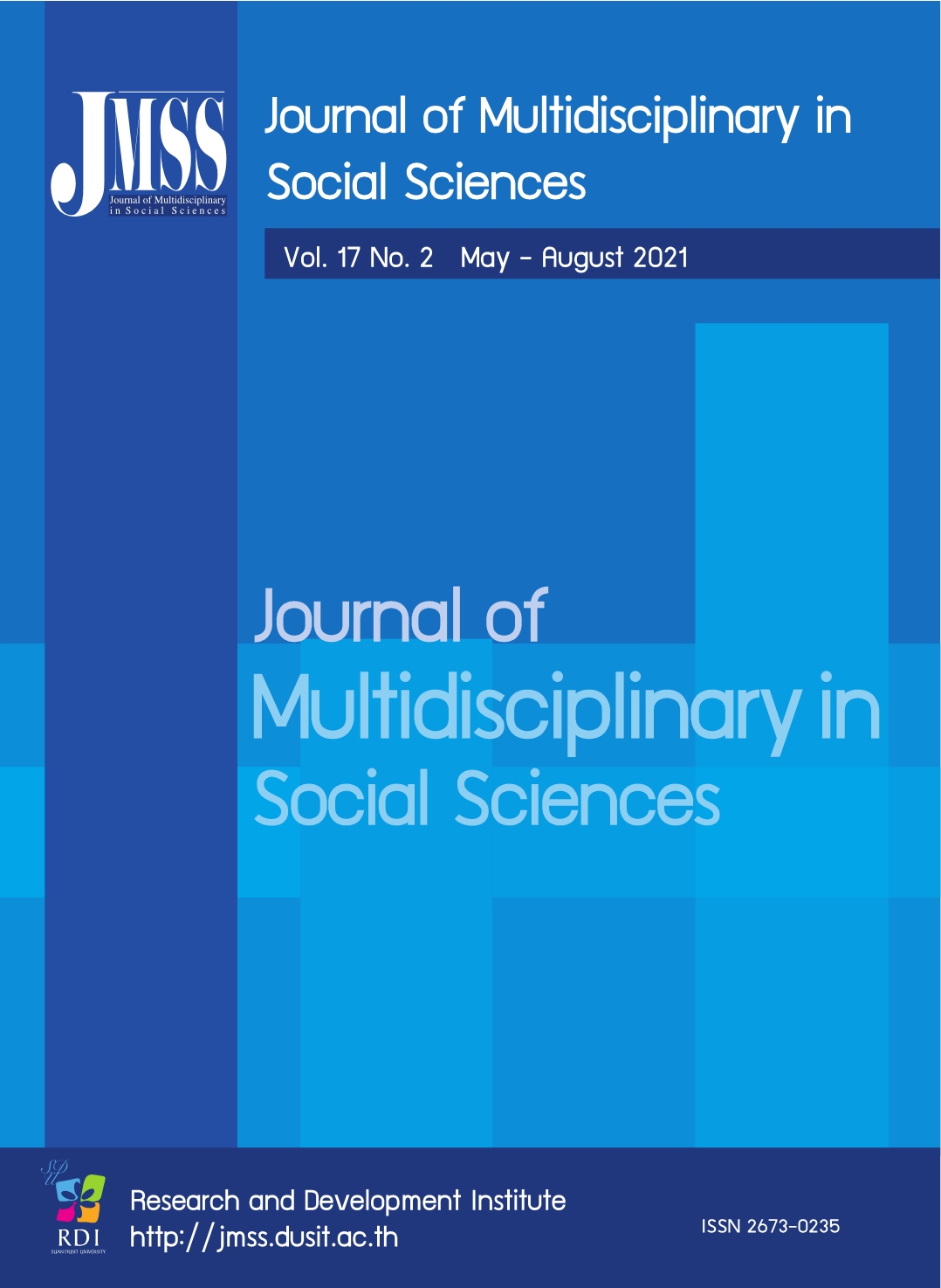The Determinants of Cloud Computing Adoption in the Banking System: A Case Study of Myanmar’s Banks
Keywords:
Cloud computing, Technology adopting, Banking system, TOE frameworkAbstract
Many organizations are shifting towards cloud computing to facilitate customer transactions, hence cloud computing has become an interest to multiple banks in the financial sector. The purpose of this research is to examine the determinants of cloud computing adoption in the banking system of two selected banks in Myanmar. The research framework with three hypotheses was developed based on the theories and previous research studies. First- and second-order technique was applied to investigate the causal relationships between the variables in different perspective of technology context, organization context, and environmental context. Multi-stage sampling technique was applied by using probability and non-probability sampling method to nominate a representative target population for quantitative research. Stratified random sampling was firstly employed to proportionately divide the target population to two commercial banks in Myanmar and purposive sampling was used to reach the target respondents who worked relatively with the cloud systems. The samples were collected from 770 respondents via offline questionnaires distribution. Confirmatory factor analysis (CFA) and structural equation model (SEM) were conducted to examine the data, confirm goodness-of-fit and validity of the model, and testing the hypotheses. The results have indicated that environmental context has the highest influence in determining cloud computing adoption in the banking system, followed by organization context and technology context. Therefore, it is important for the bank owners and top management to acquire knowledge and trends of banking industry in order to develop a cloud-based infrastructure that best react and competitive to the marketplace in an instant.
References
Ali, O., Soar, J., Yong, J., & McClymont, H. (2015). Exploratory study to investigate the factors influencing the adoption of cloud computing in Australian regional municipal governments. Journal of Art Media and Technology, 1(1), 1-13.
Apanasevic, T. (2013). Obstacles to investments in mobile payments: The perspective of merchants: Work in progress. In CMI International Conference on Developing the future ICT infrastructure-technologies, markets, and policies, Copenhagen: Aalborg University Copenhagen,
Armbrust, M., Fox, A., Griffith, R., Joseph, A. D., Katz, R., & Konwinski, A. (2010). A view of cloud computing. Communications of the ACM, 53(4), 50-58.
Awa, H. O., Ukoha, O., Bartholomew, O., & Emecheta, C. (2015). Integrating TAM, TPB and TOE frameworks and expanding their characteristic constructs for E-commerce adoption by SMEs. Journal of Science and Technology Policy Management, 6, 76-94.
Bagozzi, R. P., & Yi, Y. (1988). On the evaluation of structural equation models. Journal of the Academy of Marketing Science, 16(1), 74-94.
Baker, J. (2011). The technology-organization-environment framework. In Y. Dwivedi, M. Wade, & S. Schneberger (Eds), Information Systems Theory: Explaining and Predicting Our Digital Society (pp. 231-246). New York, NY: Springer.
Benlian, A., & Hess, T. (2011). Opportunities and Risks of Software-as-a-Service: Findings from a Survey of IT Executives. Decision Support Systems, 52(1), 232-246.
Berger, R. (2016, September 20). Myanmar Banking Sector 2025: The Way Forward. Retrieved November 29, 2020, from https://www.rolandberger.com/Sv/Media/Myanmar-Banking-Industry-2025.html
Bhatiasevi, V., & Naglis, M. (2015). Investigating the structural relationship for the determinants of cloud computing adoption in education. Education and Information Technologies, 21(5), 1197-1223.
Bien, D., Bien, W., & Madiraju, P. (2009). The impact of cloud computing on web 2.0. Economy Informatics Journal, 9(1), 1-8.
Bollen, K. A. (1989). Structural Equations with Latent Variables. John Wiley & Sons, Inc. Browne, M. W., & Cudeck, R. (1993). Alternative ways of assessing model fit. In Bollen K.A. and Long J.S. (Eds.), Testing structural equation models (136-162). Newbury Park, CA: Sage.
Byrne, B. M. (2010). Structural equation modeling with AMOS: Basic concepts, applications, and programming (2nd ed.). England, UK: Routledge.
Chang, H. H., Chou, P. B., & Ramakrishnan, S. (2009, October). An ecosystem approach for healthcare services cloud. In 2009 IEEE international conference on e-business engineering (608-612). IEEE.
Chang, I. C., Hwang, H. G., Yen, D. C., & Lian, J. W. (2006). Critical factors for adopting PACS in Taiwan: Views of radiology department directors. Decision Support Systems, 42(2), 1042-1053.
Chellappa, R. K., & Pavlou, P. A. (2002). Perceived information security, financial liability and consumer trust in electronic commerce transactions. Logistics Information Management, 15(5/6), 358-368.
Chuleeporn, C. (2014). Students' Perceptions of Cloud Computing. Issues in Information Systems, 15(1), 312-322. Davis, F. D. (1989). Perceived usefulness, perceived ease of use, and user acceptance of information technology. MIS Quarterly, 13(3), 319-339.
Feuerlicht, G., & Govardhan, S. (2010). Impact of cloud computing: beyond a technology trend.’ Proceedings of the International Conference on Systems Integration. (pp.1–8). Oeconomica Prague
Foster, I., Zhao, Y., Raicu, I., & Lu, S. (2008). Cloud computing and grid computing 360-degree compared. In Grid computing environments workshop. (pp 1-10) IEEE
Gangwar, H., Date, H., & Ramaswamy, R. (2015). Understanding determinants of cloud computing adoption using an integrated TAM-TOE model. Journal of Enterprise Information Management, 28, 107-130.
Gartner, (2009). Gartner report ―Top 10 Strategic Technologies for 2010, Oct 2009. Retrieved November 29, 2020, from http://www.gartner.com/it/page.jsp?id=1210613
Gefen, D., Straub, D., & Boudreau, M. (2000). Structural Equation Modeling And Regression: Guidelines For Research Practice. Communications of the Association for Information Systems, 4(7), 7.
Gewald, H., & Dibbern, J. (2009). Risks and Benefits of Business Process Outsourcing: A Study of Transaction Services in the German Banking Industry. Information and Management 46(4), 249-257.
Ghalimi, I. C. (2010). Benefits of Cloud Computing. Retrieved November 29, 2020, from https://www.scribd.com/document/65379756/Benefits-of-Cloud-Computing
Grace, J. B., Schoolmaster, D. R., Guntenspergen, G. R., Little, A. M., Mitchell, B. R., Miller, K. M., & Schweiger, E. W. (2012). Guidelines for a graph-theoretic implementation of structural equation modeling. Ecosphere, 3(8), 1-44.
Gupta, P., Seetharaman, A., & Raj, J. R. (2013). The usage and adoption of cloud computing by small and medium businesses. International Journal of Information Management, 33(5), 861-874.
Gutierrez, A., Boukrami, E., & Lumsden, R. (2015). Technological, Organizational and Environmental Factors Influencing Managers’ Decision to Adopt Cloud Computing in the UK. Journal of Enterprise Information Management, 28, 788-807.
Hair, J. F., Anderson, R. E., Tatham, R. L., & Black, W. C. (1998). Multivariate Data Analysis (5th ed.). Upper Saddle River: Pearson Prentice Hall.
Hair, J. F., Black, W. C., Babin, B. J., Anderson, R. E., & Tatham, R. L. (2006). Multivariate Data Analysis (6th ed.). Upper Saddle River: Pearson Prentice hall.
Hair, J. F., Black, W. C., Babin, B. J., & Anderson, R. E. (2010). Multivariate Data Analysis: A Global Perspective (7th ed.). London, Pearson Education. Henseler, J., & Sarstedt, M. (2012). Goodness-of-fit indices for partial least squares path modeling. Computational Statistics, 28(2), 565-580.
Hopwood, C. J., & Donnellan, M. B. (2010). How should the internal structure of personality inventories be evaluated?. Personality and Social Psychology Review, 14(3), 332-346.
Hsiao, S. J., Li, Y. C., Chen, Y. L. & Ko, H. C. (2008). Critical Factors for the Adoption of Mobile Nursing Information Systems in Taiwan: The Nursing Department Administrators’ Perspective. Journal of Medical Systems, 33(5), 369-377.
Jaruwanakul, T. (2021). Key influencers of innovative work behavior in leading Thai property developers. AU-GSB e-Journal, 14(1), 61-70.
Jeyaraj, A., Rottman, J. W., & Lacity, M. C. (2006). A review of the predictors, linkages, and biases in IT innovation adoption research. Journal of Information Technology, 21(1), 1-23.
Jørgensen, F., Boer, H., & Laugen, B. T. (2006). CI Implementation: An Empirical Test of the CI Maturity Model. Creativity and Innovation Management, 15(4), 328-337.
Kiriinya, D. (2014). Factors Influencing Cloud Computing Adoption in Organisations: A Case of Cooperative Insurance Company of Kenya (Doctoral dissertation). United States International University-Africa.
Kitcharoen, K., & Vongurai, R. (2021). Factors influencing customer attitude and behavioral intention towards consuming dietary supplements. AU-GSB e-Journal, 13(2), 94-109.
Kuan, K. K. Y., & Chau, P. Y. K. (2001). A perception-based model for edi adoption in small businesses using a technology-organization-environment framework. Information & Management, 38(8), 507-521.
Laforet, S. (2011). A framework of Organisational innovation and outcomes in SMEs. International Journal of Entrepreneurial Behaviour and Research, 17, 380-408.
Li, H., Sedayao, J., Hahn-Steichen, J., Jimison, E., Spence, C., & Chahal, S. (2009). Developing an Enterprise Cloud Computing Strategy. Retrieved November 29, 2020, from https://www.researchgate.net/publication/263658917_Developing_an_Enterprise_Cloud_Computing_Strategy
Lian, J. W., Yen, D. C., & Wang, Y. T. (2014). An exploratory study to understand the critical factors affecting the decision to adopt cloud computing in Taiwan hospital. International Journal of Information Management, 34(1), 28-36.
Lo´pez-Nicola, C., Molina-Castillo, F. J. & Bouwman, H. (2008). An assessment of advanced mobile services acceptance: contributions from TAM and diffusion theory models. Information & Management, 45(6), 359-364
Low, C., Chen, Y., & Wu, M. (2011). Understanding the determinants of cloud computing adoption. Industrial Management & Data Systems, 111(7), 1006-1023.
Lwin, N. (2020). Huawei extends cloud services to Myanmar as firms go digital. Retrieved November 29, 2020, from https://www.irrawaddy.com/news/burma/huaweiextends-cloud-services-myanmar-firms-go-digital.html
Macredie, R.D., & Mijinyawa, K. (2011). A theory-grounded framework of open source software adoption in SMEs. European Journal of Information Systems, 20(2), 237- 250.
Maqueira-Marín, J. M., Bruque-Cámara, S., & Minguela-Rata, B. (2017). Environment determinants in business adoption of cloud computing. Industrial Management and Data Systems, 117(1), 228-246.
McKinnie, M. (2016). Cloud Computing: TOE Adoption Factors By Service Model In Manufacturing (Doctoral Dissertation). Georgia State University, Atlanta, Georgia.
Mell, P., & Grance, T. (2011). The NIST definition of cloud computing (draft). NIST special publication, 800(145), 7.
Microsoft Asia News Center. (2018). AYA Bank embraces cloud and embarks on digital transformation journey with Microsoft. Retrieved November 29, 2020, from https://news.microsoft.com/apac/2018/08/30/aya-bankembraces-cloud-and-embarks-on-digital-transformation-journey-with-microsoft/
Misra, S. C., & Mondal, A. (2011). Identification of a Company’s suitability for the adoption of cloud computing and modeling its corresponding return on investment. Mathematical and ComputerModelling, 53, 504-521.
Mohammadi, A., Saeedikondorib, A., & Azman Bin Alia, N. (2017). Factors influencing cloud computing adoption in Malaysian information technology companies. School of Business and Economics. Retrieved November 29, 2020, from https://econ.upm.edu.my/content/factors_influencing_cloud_computing_adoption_in_malaysian_information_technology_companies-35609
Mohsen, T., & Reg, D. (2011). Making Sense of Cronbach’s Alpha. International journal of Medical Edcation, 2, 53-55.
Moore, G.C., & Benbasat, I. (1991) Development of an instrument to measure the perceptions of adopting an information technology innovation. Information Systems Research, 2(3), 192-222.
Munguti, S., & Opiyo, E. (2018). Factors influencing the adoption of cloud computing in software development companies in Kenya. International Academic Journal of Information Systems and Technology, 2(1) 126-144.
Nkhoma, M., & Dang, D. (2013). Contributing factors of cloud computing adoption: a technologyorganizationenvironment framework approach. International Journal of Information Systems and Engineering, 1, 38-49.
Oliveira, T., & Martins, M. (2011). Literature review of information technology adoption models at the firm level. Electronic Journal of Information Systems Evaluation, 14(1), 110-121.
Oliveira, T., Thomas, M., & Espadanal, M. (2014). Assessing the determinants of cloud computing adoption: An analysis of the manufacturing and services sectors. Information & Management, 51(5), 497-510.
Onwuegbuzie, A. J., & Leech, N. L. (2007). A call for qualitative power analyses. Quality & Quantity, 41(1), 105-21. Parasuraman, A. (2000). Technology readiness index (tri): a multiple-item scale to measure readiness to embrace new technologies. Journal of Service Research, 2(4), 307–320.
Pallant, J. (2020). SPSS Survival Manual: A Step by Step Guide to Data Analysis Using IBM SPSS. England, UK: Routledge.
Rogers, E. M. (1983). Diffusion of innovations (3rd ed.). New York: Free Press.
Rogers, E. M. (1995). Diffusion of innovations (4th ed.). New York: Free Press.
Sayginer, C., & Ercan, T. (2020). Understanding determinants of cloud computing adoption using an integrated diffusion of innovation (DOI) technological, organizational and environmental (TOE) model. Humanities & Social Sciences Reviews, 8(1), 91-102.
Segars, A., & Grover V. (1993). Re-examining perceived ease of use and usefulness. MIS quarterly, 17, 517-525.
Seham, S. (2017). Factors Influencing the Adoption of Cloud Computing by Saudi University Hospitals. International Journal of Advanced Computer Science and Applications, 8(1), 41-48.
Senk, C. (2013). Adoption of security as a service. Journal of Internet Services and Applications, 4(11), 1-16.
Shin, D. H. (2009). Towards an understanding of the consumer acceptance of mobile wallet. Computers in Human Behavior, 25(6), 1343-1354.
Singh, J., & Mansotra, V. (2019). Factors affecting cloud computing adoption in the Indian school education system. Education and Information Technologies, 24(4), 2453-2475.
Soper, D. (2006). Calculator: A-priori Sample Size for Structural Equation Models. Retrieved November 29, 2020, from https://www.danielsoper.com/statcalc/calculator.aspx?id=89
Straub, D. W. (1989). Validating Instruments in MIS Research. MIS Quarterly, 13(2), 147.
Tan, T. C. F. (2010). A perception based model for technological innovation in small and medium enterprises. Paper presented at 18th European Conference on Information Systems (ECIS), Pretoria, South Africa.
Tafoya, F. (2020). What is Cloud Adoption and Why is it Important?. Retrieved November 29, 2020, from https://www.itexico.com/blog/what-is-cloud-adoption
Tehrani, S. R. (2013). Factors influencing the adoption of cloud computing by small and medium sized enterprises (SMEs) (Master’s thesis). Canada: Ryerson University.
Tornatzky, L. G., & Fleischer, M. (1990). Processes of technological innovation. Lanham, MD: Lexington Books.
Tuncay, E. (2010). Effective use of cloud computing in educational institutions. Procedia: Social and Behavioral Science, 2(2), 938-942.
US National Institute of Standards and Technology. (2011). The NIST definition of cloud computing. Retrieved November 29, 2020, from https://www.nist.gov/newsevents/news/2011/10/final-version-nist-cloudcomputing-definition-published
Venkatesh, V., & Davis, F. D. (2000). A theoretical extension of the technology acceptance model: Four longitudinal field studies. Management science, 46(2), 186-204.
Wang, L., & Laszewski, V. (2008). Cloud computing: a perspective study. Retrieved November 29, 2020, from https://ritdml.rit.edu/bitstream/
Wang, Y., & Qualls, W. (2007). Towards a theoretical model of technology adoption in hospitality organizations. International Journal of Hospitality Management, 26(3), 560-573.
Wang, Y. M., Wang, Y. S., & Yang, Y. F. (2010). Understanding the determinants of RFID adoption in the manufacturing industry. Technological Forecasting and Social Change, 77, 803-815.
Wikipedia. (2020). Ayeyarwady Bank. Retrieved November 29, 2020, from https://en.wikipedia.org/wiki/Ayeyarwady_Bank
World Bank. (2018). Myanmar: Investment analysis and investigation options for the proposed digital government project. Retrieved November 29, 2020, from https://documents.worldbank.org/en/publication/documents-reports/documentdetail/528481530162210035/myanmar-investment-analysis-and-implementation-options-for-digital-government-project
Wu, W. W., Lan, L. W., & Lee, Y. T. (2011). Exploring decisive factors affecting an organization’s SaaS adoption: a case study. International Journal of Information Management, 31(6), 556-563.
Downloads
Published
How to Cite
Issue
Section
License

This work is licensed under a Creative Commons Attribution-NonCommercial-NoDerivatives 4.0 International License.








